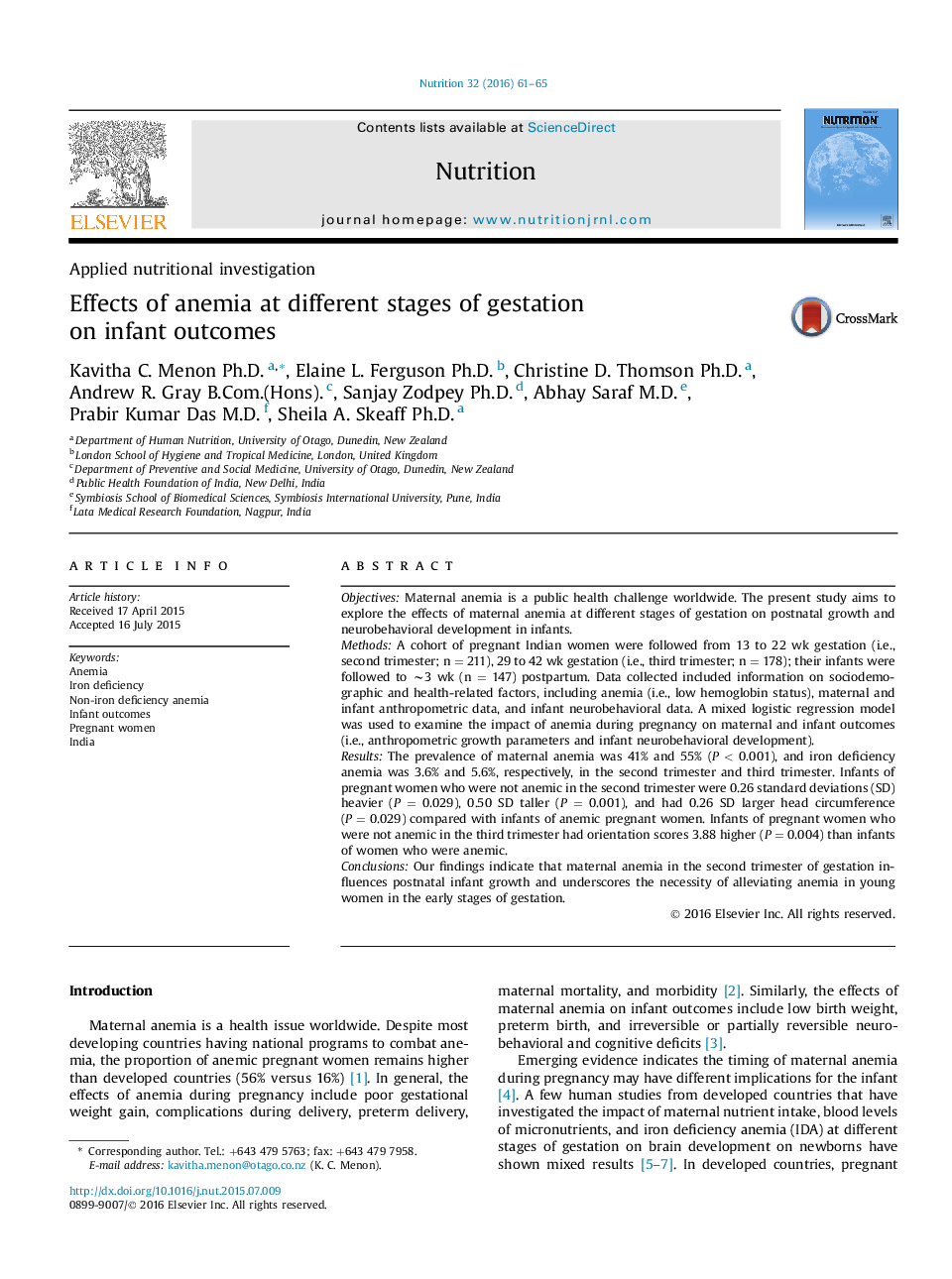| کد مقاله | کد نشریه | سال انتشار | مقاله انگلیسی | نسخه تمام متن |
|---|---|---|---|---|
| 6089169 | 1208537 | 2016 | 5 صفحه PDF | دانلود رایگان |
- The impact of maternal anemia in the second and third trimesters on infant outcomes at â¼3Â wk postpartum were assessed.
- Infants of pregnant women who were not anemic in the second trimester were heavier, taller, and had a larger head circumference compared with infants of anemic women.
- Infants of pregnant women who were not anemic in the third trimester had higher alertness and social interaction skills than infants of women who were anemic.
- It is important to alleviate anemia in young women in the early stages of pregnancy.
ObjectivesMaternal anemia is a public health challenge worldwide. The present study aims to explore the effects of maternal anemia at different stages of gestation on postnatal growth and neurobehavioral development in infants.MethodsA cohort of pregnant Indian women were followed from 13 to 22 wk gestation (i.e., second trimester; n = 211), 29 to 42 wk gestation (i.e., third trimester; n = 178); their infants were followed to â¼3 wk (n = 147) postpartum. Data collected included information on sociodemographic and health-related factors, including anemia (i.e., low hemoglobin status), maternal and infant anthropometric data, and infant neurobehavioral data. A mixed logistic regression model was used to examine the impact of anemia during pregnancy on maternal and infant outcomes (i.e., anthropometric growth parameters and infant neurobehavioral development).ResultsThe prevalence of maternal anemia was 41% and 55% (P < 0.001), and iron deficiency anemia was 3.6% and 5.6%, respectively, in the second trimester and third trimester. Infants of pregnant women who were not anemic in the second trimester were 0.26 standard deviations (SD) heavier (P = 0.029), 0.50 SD taller (P = 0.001), and had 0.26 SD larger head circumference (P = 0.029) compared with infants of anemic pregnant women. Infants of pregnant women who were not anemic in the third trimester had orientation scores 3.88 higher (P = 0.004) than infants of women who were anemic.ConclusionsOur findings indicate that maternal anemia in the second trimester of gestation influences postnatal infant growth and underscores the necessity of alleviating anemia in young women in the early stages of gestation.
Journal: Nutrition - Volume 32, Issue 1, January 2016, Pages 61-65
